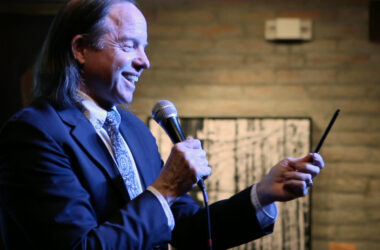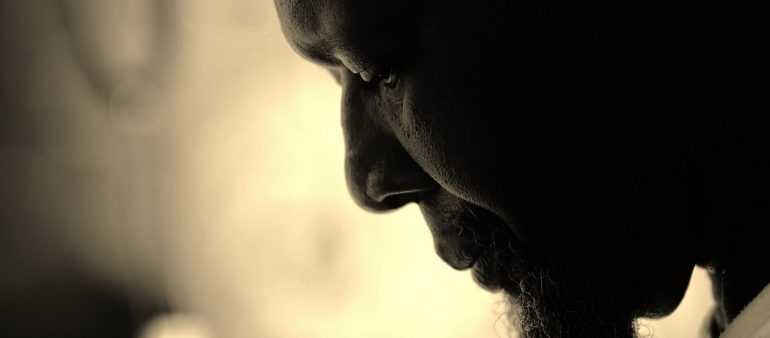Audio
This is teaching on a text written by Tendar Hlarampa (丹达拉然巴) (1751-1831), which is a commentary on Dharmakirti’s classic text called Proving Other People Have Minds (Saṃtānāntarasiddhi in Sanskrit).
Interestingly, at some point in his life Tendar Hlarampa traveled to Beijing, where he taught at Yonghe Gong (雍和宫), the main Tibetan and Mongolian Buddhist center in the Chinese capital. While there, he lectured on various aspects of Buddhist doctrine and even composed a treatise on the origins of the tea ceremony.
Tendar Hlarapa was a great scholar
and his written works cover many diverse topics, such as comparative analyses of writings by past scholars in various fields, including poetry, literature, and philosophical scriptures. He also composed philosophical critiques, poetry, and treatises on grammar and literature. Interestingly, at some point in his life Tendar Hlarampa traveled to Beijing, where he taught at Yonghe Gong (雍和宫), the main Tibetan and Mongolian Buddhist center in the Chinese capital. While there, he lectured on various aspects of Buddhist doctrine and even composed a treatise on the origins of the tea ceremony.
If all things in our world are coming from the ripening of karmic seeds
which were created by our actions towards other people in the past, then in a sense, you could say that all things are coming from you. Recently in Beijing at one of the DCI events, one of the students asked the following question: “if my husband is coming from me, if I kiss him am I kissing myself?”

People throughout the world quite often ask similar questions, so Geshe Michael thought he should teach this book. Dharmakirti wrote seven books—the most famous is Pramanavartikka, which answers one of the most fundamental questions of how things truly exist, and how to see things correctly.

These seven books by Dharmakirti form the basis of Buddhist debate and reason—how to see things correctly—and are called “the key to emptiness”. When they were written in India it was already after the time that the famous Chinese translator Xuanzang’s (玄奘) school had died out, so these seven books didn’t reach China. Dharmakirti’s writings were to further clarify the earlier writings of Master Dignaga, who lived around 440 A.D. and is considered the founder of Buddhist logic. Some of Master Dignaga’s books did make it to China.
This Tibetan commentary by Tendar Hlarampa on Dharmakirti’s text called Proving Other People Have Minds, is quite clear and is divided into two parts—the first explains the Mind-Only School, in order to prepare the reader for Dharmakirti. It’s a short and succinct explanation, and that’s the part that Geshe Michael covers in this lecture. The Beijing people asked the same question that he asked 1400 years ago, and we can use it as an opportunity to learn about this great Mind Only school of Buddhism.
Options for Further Study
If you’d like to go deeper and further your studies of the topics introduced in this lecture, please follow the links below:
ACI Course 05: How Karma Works (1994, New York, Geshe Michael Roach)
 Class 5 of this course covers in detail how karma is carried, according to the Mind-Only School.
Class 5 of this course covers in detail how karma is carried, according to the Mind-Only School.
ACI Course 04: Proof of Future Lives (1994, New York, Geshe Michael Roach)
 This Course is based upon the Compendium on Valid Perception (Pramana Samuchaya) by Master Dignaga (440 AD), the Commentary on Valid Perception (Pramana Varttika) by Master Dharmakirti (630 AD), Light on the Path to Freedom (Tarlam Selje) by Gyaltsab Je (1362-1432), and Jewel of the True Thought (Tsema Gong-gyen) by Geshe Yeshe Wangchuk (1928-present). Topics include: the definition of valid perception, the three levels of perception, who has valid perceptions and how, evaluating things beyond our direct perception, how great compassion is developed, the nature of omniscience, the material cause of the mind, proofs of the mind’s source, proofs for the existence of past and future lives, and how desire leads to rebirth – an explanation of crucial links in the chain of dependent origination.
This Course is based upon the Compendium on Valid Perception (Pramana Samuchaya) by Master Dignaga (440 AD), the Commentary on Valid Perception (Pramana Varttika) by Master Dharmakirti (630 AD), Light on the Path to Freedom (Tarlam Selje) by Gyaltsab Je (1362-1432), and Jewel of the True Thought (Tsema Gong-gyen) by Geshe Yeshe Wangchuk (1928-present). Topics include: the definition of valid perception, the three levels of perception, who has valid perceptions and how, evaluating things beyond our direct perception, how great compassion is developed, the nature of omniscience, the material cause of the mind, proofs of the mind’s source, proofs for the existence of past and future lives, and how desire leads to rebirth – an explanation of crucial links in the chain of dependent origination.
ACI Course 13: The Art of Reasoning (1998, New York, Geshe Michael Roach)
 This Course is based upon the Commentary on Valid Perception (Pramanavarttika) by Master Dharmakirti (630 AD) with a commentary from The Key for Starting the Logic Machine (Rik- lam Trul- gyi Deamik) by Purbuchok Jampa Tsultrim Gyatso (1825- 1901). The Course presents the structure of Buddhist logic and the forms of Buddhist debate.
This Course is based upon the Commentary on Valid Perception (Pramanavarttika) by Master Dharmakirti (630 AD) with a commentary from The Key for Starting the Logic Machine (Rik- lam Trul- gyi Deamik) by Purbuchok Jampa Tsultrim Gyatso (1825- 1901). The Course presents the structure of Buddhist logic and the forms of Buddhist debate.




















